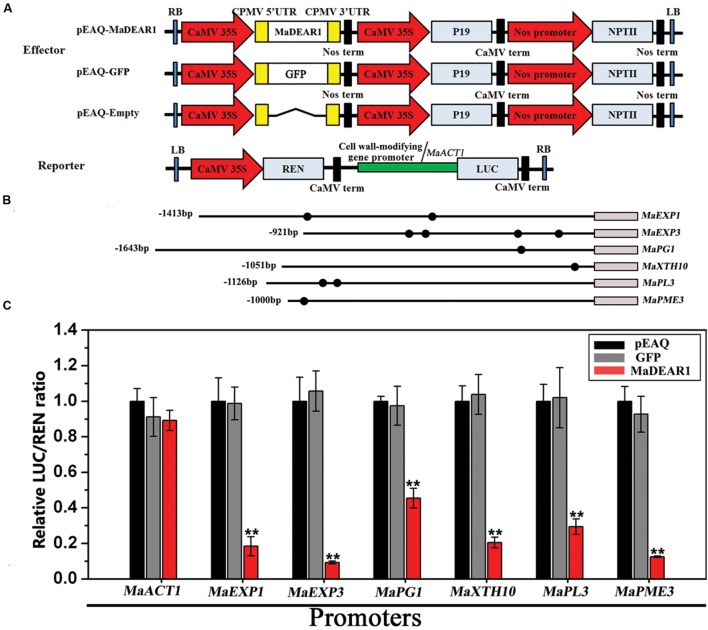FIGURE 6.
Transient dual-luciferase reporter assays showing MaDEAR1’s ability to repress the promoter activity of MaEXP1/3, MaPG1, MaXTH10, MaPL3, or MaPME3. (A) Constructs used in the transient assays. The reporter contained the MaEXP1/3, MaPG1, MaXTH10, MaPL3, or MaPME3 promoters fused to LUC luciferase and REN luciferase driven by CaMV 35S as internal control. The effector contained the MaDEAR1 driven by the CaMV35S. The effector vector also contained the P19 suppressor of gene silencing, and the NPTII kanamycin resistance gene. (B) Schematics of the promoter of MaEXP1/3, MaPG1, MaXTH10, MaPL3, or MaPME3. Promoter length and DRE/CRT cis-acting elements are indicated with lines and black circles, respectively. (C) MaDEAR1 represses the promoter activity of MaEXP1/3, MaPG1, MaXTH10, MaPL3, or MaPME3. Agrobacterium tumefaciens strain GV3101 carrying the LUC reporter plasmid and different combinations of effector plasmids was infiltrated into N. benthamiana leaves, and the luciferase activity at the site of infiltration was measured 2 days after infiltration. The repression ability of MaDEAR1 to the promoter was shown by the ratio of LUC to REN. The ratio of LUC to REN of the empty vector (pEAQ) plus promoter was used as a calibrator (set as 1). The reporter containing the MaACT1 promoter, and effector carrying the GFP gene were used as negative controls. Each value represents the means of six biological replicates, and vertical bars represent the SE ∗∗P < 0.01 by Student’s t-test, compared with pEAQ.

